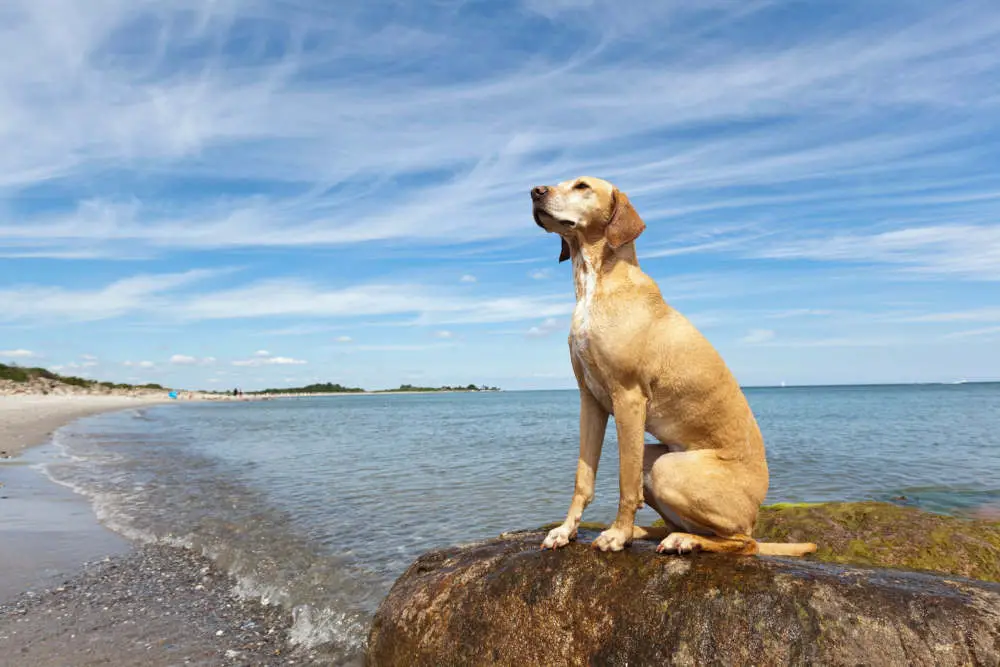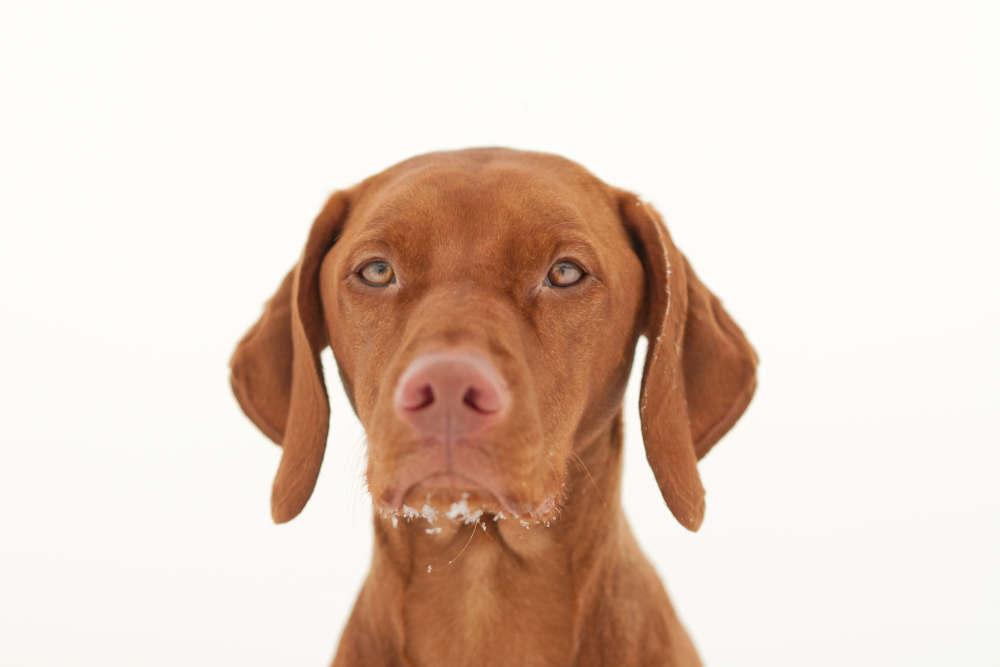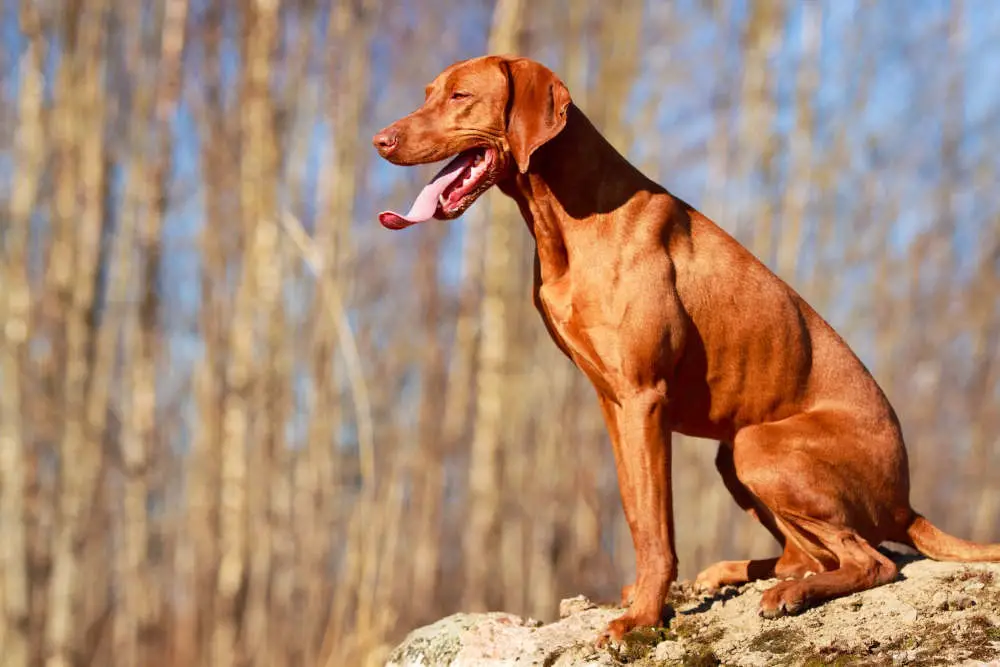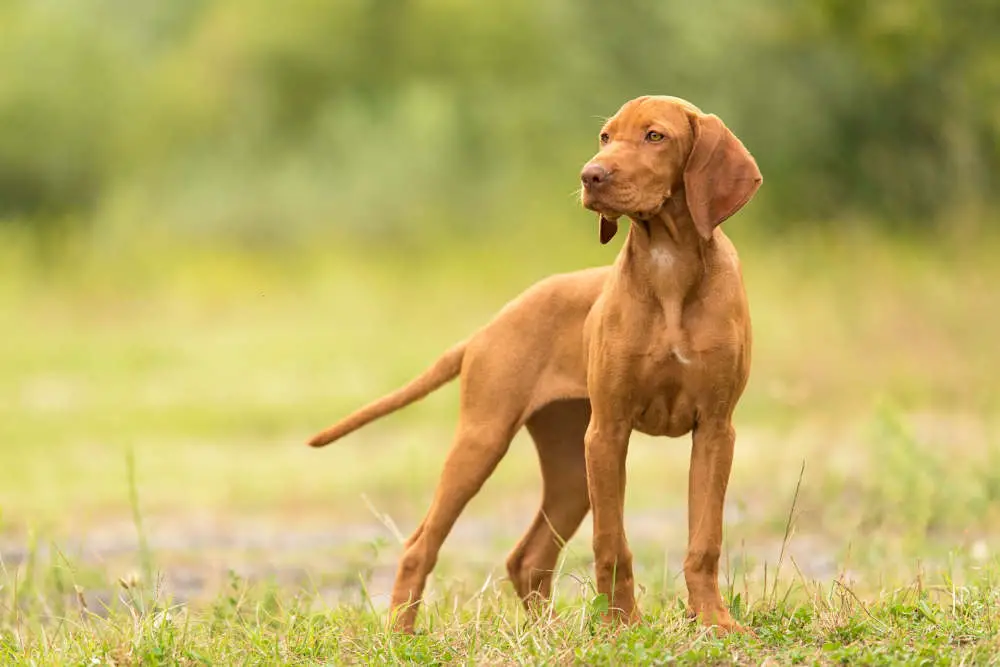The distinct breed of Vizsla is also known as the Hungarian Pointer or the Hungarian Vizsla. The regal dogs are taking over social media with their affectionate personalities and high-energy action.
This breed of dog is recognized by the American Kennel Club and ranks 31 out of 193 in the popular category.
Vizslas are a multi-purpose breed with the characteristics of a retriever and a Pointer. Their most distinctive feature is the coat color which comes in various shades.
In this article, we will go over the various Vizsla colors in addition to a peek into the breed history, physical characteristics and personality traits.
History of Vizslas
The origin story of the Vizslas can be traced back to the Magyar people of Europe. The Vizslas of that era were bred with qualities of toughness, agility and speed to match the vigor of the tribe and their horses as they raced across the continent.
Over time, they became reserved for Hungarian aristocrats who refined these qualities that eventually gave birth to the modern-day Vizsla. The breed soon became synonymous with speed, hunting and versatility.
Fast-forward to modern times, the breed’s eagerness and ability to survive history’s most awful events caught the eye of the Americans, and the first Vizsla landed in the States in 1950, under cloak and dagger.
Their versatility really poured forth when Chartay, a Vizsla, made AKC history as the first dog to win championships across five separate sports.
Despite being bred as hunting companions, today, Vizslas serve as working companions, acting as search and rescue dogs and sniffers at airports.
Characteristics of Vizslas
The photogenic breed of Vizsla has a life expectancy of 12 to 14 years. The male has an average height of 22 to 24 inches and a weight of 55 to 60 pounds. On the other hand, the female reaches up to 21 to 23 inches and weighs between 44 to 55 pounds.
Their fur color is what sets them apart from other breeds. The beautiful short coat is typically golden rust in color. The shade varies from dog to dog.
Like other dog breeds, Vizslas are also prone to certain health conditions such as epilepsy, progressive retinal atrophy, hypothyroidism, hip dysplasia, etc.
Under proper care and a healthy environment, Vizslas live long and make for amiable pets.
Personality Traits of Vizslas
Vizslas definitely are known for their bravery and courage. Despite giving off a tough exterior, they are known for their affectionate and gentle behavior. Their hunting genes mean they are highly energetic and require plenty of attention.
They are well-suited for people who can give them the time of day and are capable of handling a high-energy and intelligent breed.
They are friendly and thrive around people. They bond with children and are good playmates for all ages. However, they require supervision as they are an excitable breed and can unintentionally knock over smaller children while playing.
They have great protective instincts, making for great watchdogs. They are able to sniff out dangerous situations. However, they are not considered the best guard dogs because of their friendly nature.
The breed is extremely skilled and has worked across various fields ranging from K-9 units to therapy dogs.
Due to their high-prey drive, they are not considered suitable pets for those who own hamsters, reptiles or birds.
Vizslas will play well with other dogs given proper and consistent socialization. These affectionate dogs thrive on an active lifestyle.
A Guide to Vizsla Coat Colors
Vizslas are covered in a dense and smooth coat that is short in length. In accordance with breed standards, the coat should not be long.
Due to their lack of undercoat, they do not shed heavily like other undercoated dogs. However, they do shed in moderation, which can be problematic if you have allergies.
Despite not being hypoallergenic, they are low maintenance. Their grooming is easy to take care of. They are also fastidious and take time to groom themselves daily.
The standard beautiful, smooth coat of a Vizsla is easily recognizable by its golden-rust hues. You will find Vizslas with coat colors ranging in various shades of sandy yellow and golden rust.
Their features easily camouflage with their dusky coat. This is beneficial when they are out on a hunt.
Although the golden rust shade is the standard breed color for a Vizsla, there are six additional colors that have been approved by the American Kennel Club breed standard.
Sandy Yellow Vizsla

This color has the stamp of approval from the American Kennel Club. The coat color mimics blonde fur. You will find Vizslas in different shades of yellow.
Russet Gold Vizsla

This coat color has hues of warm russet with a touch of gold. Occasionally, there will be more reddish undertones around the eyes and the nose. One interesting fact about Vizslas with this coat color is that they were involved in hunting wild animals across the central grassland of Hungary in the 14th century. Due to the slight nature of its greasy coat, this Vizsla is ideally best suited for work in the sweltering heat of the fields.
Rust Vizsla

Most of the fur of rust-colored Vizslas has a splattering of orange-brown color with a light shade of brown on the shoulders and neck.
Red Golden Vizsla

The red golden coat color also has approval by the AKC. You will notice a reddish-gold color with hints of mahogany or amber. Sometimes, there can be a shade of dark brown with definite tones of red.
Red Vizsla

This coat color speaks for itself. These Vizslas have a reddish coat covering their entire body with lighter tones around the neck and the shoulders. This coat is similar to the shade of rusty brown. A red Vizsla pup is born if there is at least one set of dominant red genes.
Golden Vizsla

A golden Vizsla is marked with a lighter tone of the golden rust coat. The coat of such a dog has more faded yellowish undertones that come off as a golden shade.
Golden Rust Vizsla

The standard coat color for Vizslas is golden rust. The entirety of the body is covered in a single color. This color can resemble light brown with a darker muzzle. Golden rust Vizslas are the most common among the breed.
Besides the above colors, there is one more coat color that is considered a breed standard. White markings on a Viszla are also a norm.
These markings can show up a few inches from the dog’s throat or on the chest. They can also be found on fingers, the face and around the muzzle.
However, if the markings extend on the shoulders or the neck, it disqualifies the dog as a standard breed.
In most cases, the marking is due to aging. In such circumstances, it should not disqualify the dog or be considered a fault. However, some puppies are also born with the marking on their body. It is not common, but it is accepted.
The Bottom Line
Vizslas are highly loveable dogs with unique shades of coat color. AKC recognizes a total of seven coat colors for the breed standard. These colors are golden rust, golden, red, red golden, rust, rust golden, and sandy yellow.
The active dogs make for wonderful family pets and fit perfectly with those who have an active lifestyle. They are loyal and have an outstanding trainability score.

